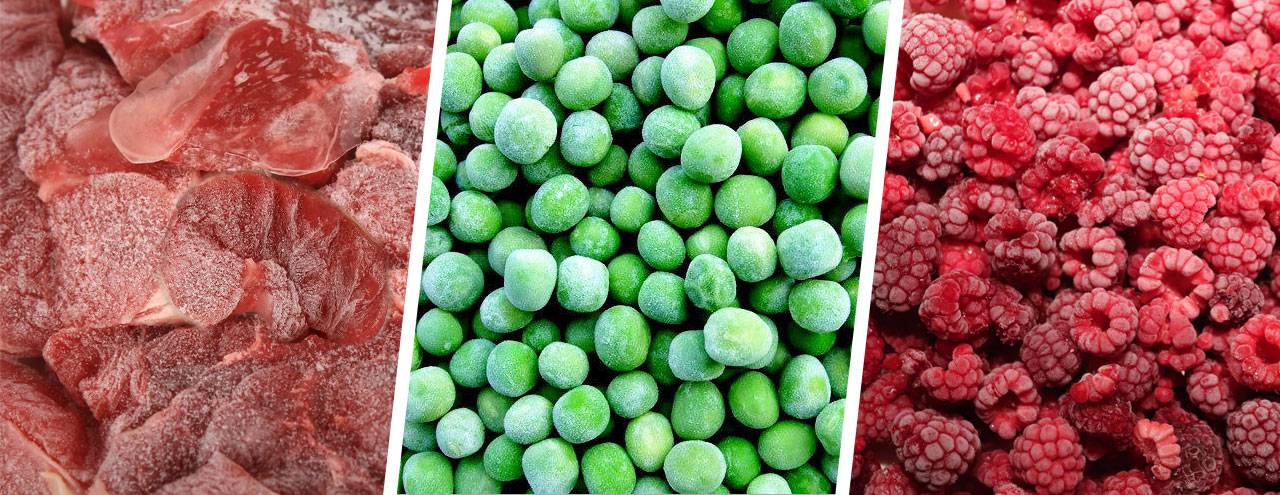Food manufacturing has never been an easy business. Setting up and running a successful food production company takes a lot of planning, energy and time. Today there’s an added challenge for food producers to produce healthy food, and also to be able to prove it to consumers, usually via food label claims.
Of course, eating healthy food should have always been our priority, but it seems that the 21. century is an especially favorable time to push this agenda. With this new consumerist awareness about the quality of food, the producers are now working even harder to answer the growing demand. Now we have local food producers gaining popularity, and mass producers trying to incorporate healthier, organic, sustainable methods in their production.
The Return of Frozen Food + New Defrosting Technologies
As part of new trends in the food industry, we have frozen food renewing its popularity and gaining new consumers. One of the reasons is because frozen food producers are making efforts to make frozen food as healthy as possible, by freezing fresh produce and meat that will be as fresh after defrosting. In addition, there are new defrosting technology trends. For example, scientists from the Bremerhaven Institute for Food Technology and Bioprocess Engineering have invented an ultrasound-based method of freezing and defrosting deep frozen fish that allows fish to maintain its quality and taste as fresh as it was right when it was caught. The method is expensive and only used in production, but just like with many hi-tech inventions, it could very well be incorporated into domestic use in the near future.
Similarly, the company NXP is developing smart defrosting solutions intended for commercial and consumer use, with a focus on enabling “healthier frozen-food options for consumers”. The idea is to use laterally diffused metal oxide semiconductor technology – sounds very serious – to defrost food in minutes, rather than hours, and keep it as fresh and nutritious as possible. This method also minimizes the chances of wasting food, which is huge, considering the fact that about ⅓ of produced food in the world gets lost or wasted.
Stay Safe: Defrost Responsibly
Though scientists have made some wonderful breakthroughs with defrosting solutions, which will certainly draw even more people to frozen food aisles in the future, today it’s still the safest to use the following 4 methods for thawing food at home:
1) Defrosting inside the refrigerator
This is probably the safest food defrosting technique out of the four we’re mentioning today. It’s a good idea to place frozen food on a plate or in a bowl, so that it doesn’t drip inside the refrigerator. Note that it takes 24 hours to defrost every 5.5 pounds of food, so it might take a while for bigger products. This definitely requires some good planning ahead.
2) Thawing in the microwave
Microwave heating is not the safest way to defrost food, because the heat isn’t distributed evenly. According to World Health Organization, microwave energy “does not penetrate well in thicker pieces of food… This can lead to a health risk if parts of the food are not heated sufficiently to kill potentially dangerous micro-organisms”. Still, many people use microwaves because their quick way of heating and defrosting is very convenient for today’s busy man.
3) Defrosting while cooking
This method is applicable only for food products that are meant to be cooked in frozen state: frozen fish, burgers, etc. Consumers should simply read the labels on frozen food products and follow directions.
4) Thawing under cold running water
This method is not recommended, but we are mentioning it as an option in case all other methods are unavailable. Thawing food under water can be dangerous in many ways: the packaging has to be completely tight so as not to allow any water in; the sink has to be completely clean; the thawing product may reach a temperature which will allow the bacteria to grow. This is called the temperature danger zone and FSIS defines it as 5-60 °C or 41-140 °F. Last but not least, imagine how much water you need to use to defrost a frozen chunk of meat this way?!
Obviously there are many things to consider when it comes to eating healthfully, watching the budget, and being mindful of the ecological factors in food production and consumption. The best way to stay safe and be a responsible consumer is to be better informed and make weekly or monthly meal plans.

